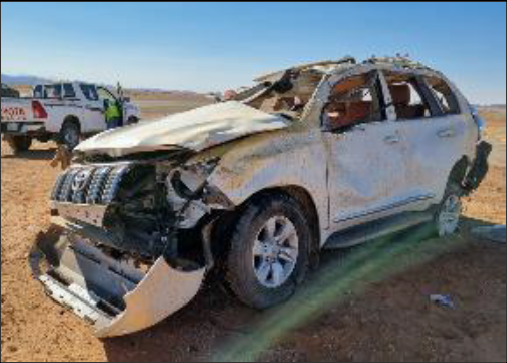Vehicle incident – driver tiredness
What happened
On completion of work on a project site, a company team were driving back to their home base. Approximately 1hr 45mins into the journey the driver started to feel tired, however he continued to drive onto the scheduled rest stop, approximately 10 km away.
Prior to reaching the rest stop the vehicle gradually drifted onto the hard shoulder and crashed into the back of a stationary police vehicle. The driver and third party (the policeman in the stationary car) were not injured, however the passenger, who had an open laptop computer on his knees and was using his phone, sustained a fractured arm and broken nose when the airbag deployed during the crash.

What went right
- Documented procedures and controls were in place;
- The passenger was also licensed and authorised to drive.
What went wrong
- Documented procedures and controls were not strictly followed in terms of fatigue management;
- Though they could have swapped over, the driver did not initiate a driver change when he felt tired;
- Unsecured cargo or luggage including laptop computers can cause serious injury if not stowed away and secured;
- The driver has the ultimate responsibility for their actions, however an observant passenger aware of their surroundings could have alerted the driver that the vehicle was drifting onto the hard shoulder.
Corrective actions
- Effectively manage journeys and speak up when circumstances change and /or we experience fatigue;
- Recognising your own tiredness and be aware of your limitations;
- As a passenger, be aware of your surroundings and keep a reasonable lookout for unsafe driver habits and conditions;
- Stow and secure luggage and/or equipment including laptop computers in designated compartments / pockets or the trunk or boot before starting journeys;
- As a passenger in a car, don’t be using a laptop computer while the vehicle is moving;
- Make use of dashcams.
Members may wish to refer to:
Safety Event
Published: 13 November 2023
Download: IMCA SF 26/23
IMCA Safety Flashes
Submit a Report
IMCA Safety Flashes summarise key safety matters and incidents, allowing lessons to be more easily learnt for the benefit of all. The effectiveness of the IMCA Safety Flash system depends on Members sharing information and so avoiding repeat incidents. Please consider adding [email protected] to your internal distribution list for safety alerts or manually submitting information on incidents you consider may be relevant. All information is anonymised or sanitised, as appropriate.
IMCA’s store terms and conditions (https://www.imca-int.com/legal-notices/terms/) apply to all downloads from IMCA’s website, including this document.
IMCA makes every effort to ensure the accuracy and reliability of the data contained in the documents it publishes, but IMCA shall not be liable for any guidance and/or recommendation and/or statement herein contained. The information contained in this document does not fulfil or replace any individual’s or Member's legal, regulatory or other duties or obligations in respect of their operations. Individuals and Members remain solely responsible for the safe, lawful and proper conduct of their operations.
